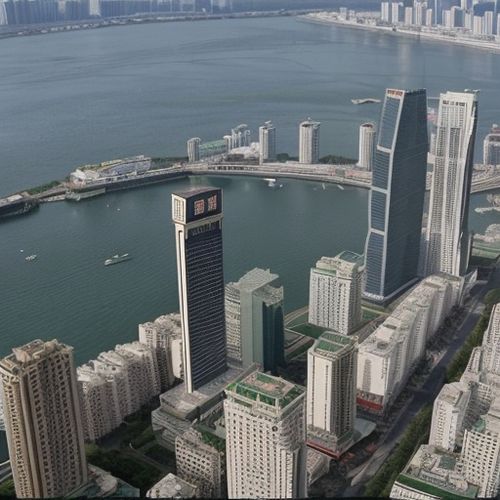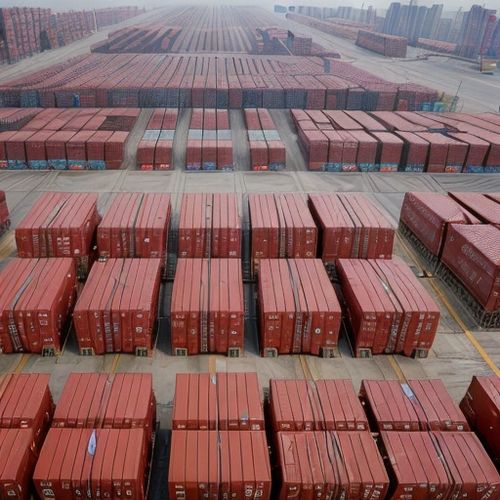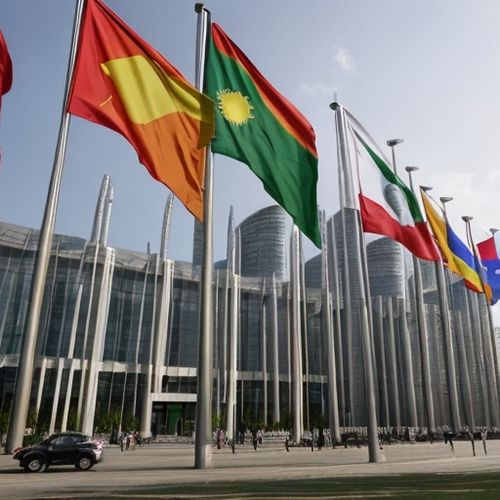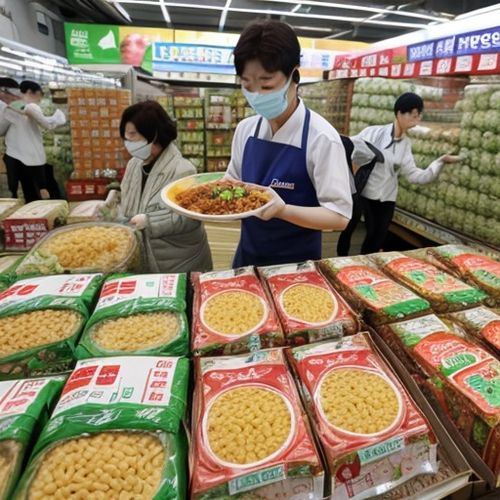The global economic landscape is bracing for potential turbulence as reports emerge that the United States is considering imposing tariffs as high as 60% on Chinese imports. Such a move, if implemented, could have far-reaching consequences, not only for the world's two largest economies but also for the intricate web of global supply chains that have been decades in the making.
Analysts warn that the proposed tariffs could shave off as much as 2 percentage points from China's economic growth, dealing a significant blow to an economy already grappling with a property crisis and sluggish domestic demand. The ripple effects would likely be felt across Asia and beyond, given China's central role as both a manufacturing hub and a massive consumer market.
The specter of such aggressive trade measures has sent shockwaves through corporate boardrooms worldwide. Many multinational companies have built complex supply chains that rely heavily on Chinese manufacturing capabilities, particularly in sectors like electronics, machinery, and consumer goods. A sudden disruption of these carefully calibrated networks could force businesses to rethink their entire operational structures.
China's response to such tariffs would be crucial in determining the ultimate economic fallout. In previous trade disputes, Beijing has shown a willingness to retaliate with targeted measures against American exports and companies operating in China. This tit-for-tat approach risks escalating into a full-blown trade war that could depress global economic growth at a time when many countries are still recovering from pandemic-related setbacks.
The potential impact extends beyond just trade figures. Global supply chains that have been optimized for efficiency over resilience may face their most significant test in decades. Many companies adopted a "China plus one" strategy following earlier trade tensions, but few have completely weaned themselves off Chinese suppliers. The proposed tariffs could accelerate this diversification, potentially benefiting manufacturing centers in Southeast Asia, India, and Latin America.
However, experts caution that replacing China's manufacturing ecosystem is easier said than done. The country's vast network of suppliers, skilled workforce, and infrastructure advantages have made it indispensable for many industries. Building comparable capacity elsewhere would require massive investments and years of development, likely leading to higher costs for consumers worldwide during the transition period.
The technology sector appears particularly vulnerable to supply chain disruptions. China dominates the production of everything from smartphones to solar panels, and its factories assemble a significant portion of the world's electronics. Tariffs could force tech companies to either absorb higher costs or pass them on to consumers, potentially slowing innovation and adoption of new technologies.
Financial markets have already begun pricing in the increased risk of heightened trade tensions. Stock prices for companies with significant exposure to Chinese manufacturing have shown increased volatility, while currencies of export-dependent Asian nations have come under pressure. Investors are closely monitoring the situation, aware that the stability of global trade flows hangs in the balance.
The political dimensions of the proposed tariffs cannot be overlooked. With elections approaching in the United States, trade policy has become a focal point in the campaign discourse. Some analysts suggest the tough stance on China may be as much about domestic politics as economic strategy, raising questions about whether the measures would achieve their stated goals of protecting American industries and jobs.
Meanwhile, European and other Asian governments find themselves in a delicate position. While many share concerns about China's trade practices, they worry about being caught in the crossfire of a U.S.-China confrontation. Some are quietly preparing contingency plans to mitigate the impact on their own economies should tensions escalate further.
The long-term implications for global economic governance could be profound. The World Trade Organization, already struggling to maintain relevance, may face its most severe test yet if major economies engage in unilateral tariff actions outside its framework. This could accelerate the fragmentation of global trade into competing blocs, reversing decades of economic integration.
For consumers, the potential tariffs threaten to reignite inflationary pressures that had begun to ease in many countries. Everything from clothing to home appliances could see price increases, squeezing household budgets that are still recovering from the cost-of-living crisis. This comes at a particularly sensitive time for central banks trying to engineer soft landings for their economies.
The business community is urging caution, with many industry groups warning that the proposed tariffs could do more harm than good. While some domestic manufacturers might benefit from reduced competition, companies that rely on Chinese components warn they could face severe disruptions. The complex nature of modern supply chains means that tariffs often have unintended consequences that ripple across multiple sectors.
As the situation develops, economists are revising their growth forecasts for both China and the global economy. The consensus appears to be moving toward a more pessimistic outlook, with the potential tariffs representing yet another headwind for world growth. The coming months will be critical in determining whether the two economic superpowers can find a way to manage their differences without derailing the fragile global recovery.
What remains clear is that the era of predictable, stable trade relations between the U.S. and China may be coming to an end. Businesses and policymakers around the world must prepare for a new reality where geopolitical considerations increasingly trump economic efficiency in shaping trade flows. The proposed tariffs, if implemented, would likely accelerate this transformation, marking a pivotal moment in the evolution of global economic relations.

By Sophia Lewis/Apr 6, 2025

By Thomas Roberts/Apr 5, 2025

By Emma Thompson/Apr 5, 2025

By Sarah Davis/Apr 5, 2025

By John Smith/Apr 5, 2025

By Laura Wilson/Apr 5, 2025

By Christopher Harris/Apr 5, 2025

By Emma Thompson/Apr 5, 2025

By David Anderson/Apr 5, 2025

By James Moore/Apr 5, 2025

By James Moore/Apr 5, 2025

By Natalie Campbell/Apr 5, 2025

By David Anderson/Apr 5, 2025

By Grace Cox/Apr 5, 2025

By Thomas Roberts/Apr 5, 2025

By Christopher Harris/Apr 5, 2025

By Michael Brown/Apr 5, 2025